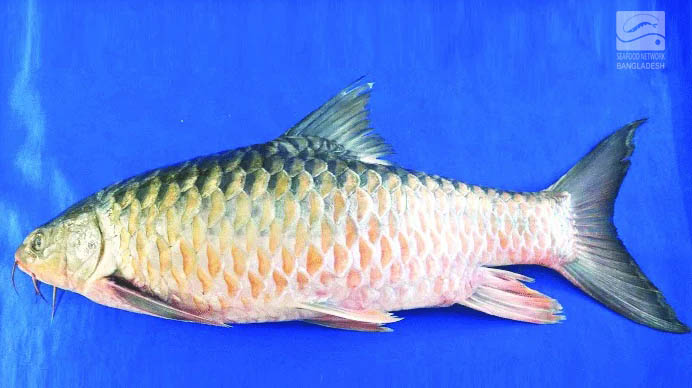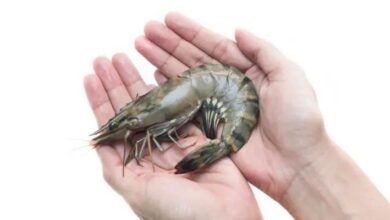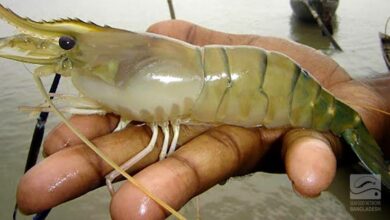A new species of Mahashol is found in Bangladesh

Mahashol or Mahseer is an endangered fish. Clear water mountain rivers are home to this giant fish. Mahseer is the common name used for the genera Tor. A type of moss called ‘Periphyton’ grows in the gaps between the stones and gravels of the river. These are the main foods of Mahashol. It can live in up to 15 meters deep water. Water temperature of 15 to 30 degrees Celsius is required for their survival. Mahashol looks a lot like a Mrigel (a fish of carp genre) fish. But its scales are bigger. The scales of mature fish are hard, bright golden in color and shiny. Fins and tail are reddish. There are two small whiskers in front of the nose. It’s a nice looking fish altogether. Mahashol is also the best in taste among native freshwater fish.
There were two known species of this fish in the country for some time now, they are also on the verge of extinction. But the silver lining is, a new Mahashol species has been found in Sangu river near Thanchi Hills in Bandarban. The scientists of Bangladesh Fisheries Research Institute (BFRI) confirmed the new species of Mahashol through DNA test last Sunday. The scientific name of the species is “Tor barakae”. Now they will work to preserve and spread the species at the field level. With this valuable find, the number of freshwater fish species in the country stands now at 261.
BFRI says that scientists from Rangamati sub-center conducted a survey in collaboration with local fishermen in search of Mahashol a year ago. Scientists found this species in Andharmanik, Boro Madak and Ligri areas of Sangu river in Thanchi, Bandarban, where water depth and rock level are high. After collection, the external structure and other aspects of the fish are examined. DNA barcoding is then done to identify the species. The fish can weigh a maximum of 15 kg. Chief scientific officer. Dr. Azhar Ali was the senior scientific officer in the scientific team. Senior Scientific officer Junaira Rashid and Scientific Officer Imdadul Haque were also in the team while conducting the examination.
Scientists say that one of the two earlier species was the Golden Mahashol (Tor tor), the other was the Red-fin Mahashol (Tor putitora). Their home was in the Kangsa and Someswari rivers of Netrakona. These two species of Mahashol mainly live in mountain springs flowing streams. It survives by feeding on algae that cling to the body of the stone.
Chief scientific officer Dr. Azhar Ali said, research has shown that the color of the fish is similar to existing ones, but the color of the fin is not yellowish like other species of Mahashol in the country and Its face is very narrow. The samples collected for qualitative research showed 100% similarity to the reference genome of Tor barakae.
Director General of Bangladesh Fisheries Research Institute (BFRI) of Mymensingh Mr. Yahia Mahmud said, “through IUCN statement in 2015, Mahashol is an endangered species of expensive fish. Mahashol was found in the Kangsa and Someswari rivers in Netrakona, but now it is found in the Sangu river. The fish is of great commercial importance as it is expensive and large in size. Research on breeding and cultivation of this new species of Mahashol will be started soon. If the fish is brought under cultivation, the overall production of fish in the country will increase.




